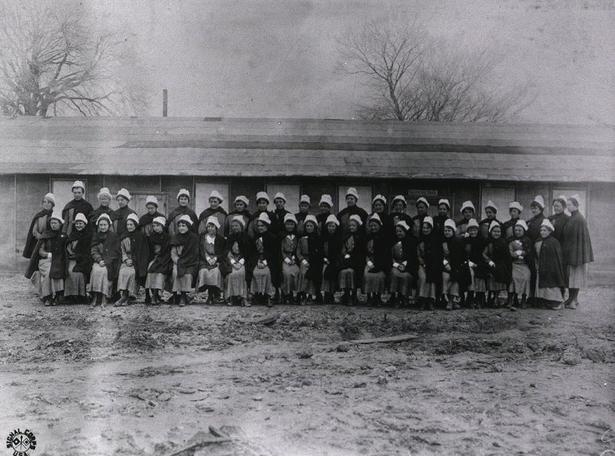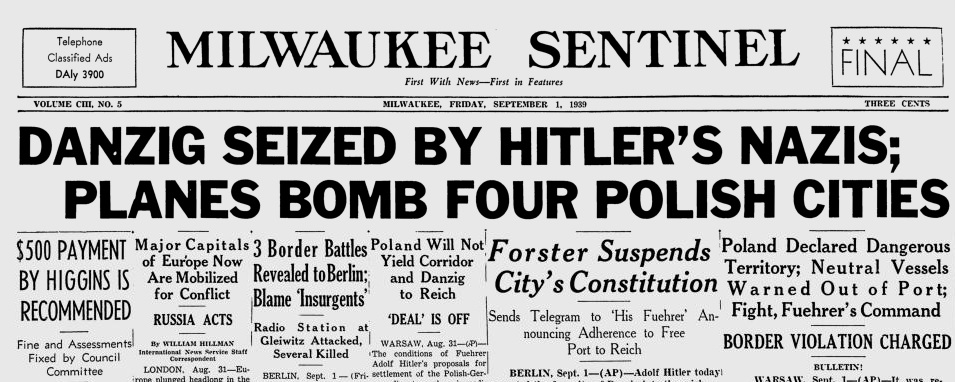A hundred years ago today, this Montana newspaper explains how mariners are now able to receive weather reports from the towers of the powerful radio station NAA in Virginia.

A hundred years ago today, this Montana newspaper explains how mariners are now able to receive weather reports from the towers of the powerful radio station NAA in Virginia.
In 1924, it was going to be a radio summer. This picture, from the May 1924 issue of Radio Age, shows two motor tourists who made the radio receiver an important part of their roadside camp. The magazine points out that such portable sets are easily made or purchased.
Periodically, I use this page to remember some of the forgotten young American men who gave their lives in the First World War. Private Melvin Myhre of Fosston, Minnesota, was killed in action on October 10, 1918, about a month before the armistice. He is buried in France with over 14,000 of his comarades at the at Meuse-Argonne American Cemetery. He served in the U.S. Army, 327th Infantry Regiment, 82nd Division.
The Meuse-Argonne Offensive, in which Private Myhre gave his life, was the largest battle in U.S. history, and involved 1.2 million American soldiers. Over 26,000, including Private Myhre, were killed. In addition, some 70,000 French soldiers were killed, as were between 90,000 and 120,000 Germans.
His brother, Private Peter Myhre, also died in France on November 1, 1918, only ten days before the Armistice. He is buried at the St. Mihiel American Cemetery, along with over 4000 American soldiers.
According to Polk County Minnesota in the World War, Melvin and Peter were sons of Mr. and Mrs. Mikkel Myhre. Melvin entered service on March 2, 1918. Peter entered the service on July 26 and was taken sick about October 15 behind the front near Clermont Woods. He died at the Mesves hospital.
Their pictures shown here, are from the three-volume Soldiers of the Great War (Vol. 2, p. 99).

Nurses at U.S. Army Hospital, Mesves, France. (Nat’l Institutes of Health photo).
 Fifty years ago, the vacuum tube was still king, although its days were coming to an end. The September 1964 issue of Electronics Illustrated contained several construction projects, most of which relied on tubes. The Micron Electron Tube Company advertised a few dozen common tubes for 37 cents each. Other tubes were available at reasonable prices. For example, hams looking for finals for their transmitter could find an 807 for a dollar, or a 6146 for $2.45.
Fifty years ago, the vacuum tube was still king, although its days were coming to an end. The September 1964 issue of Electronics Illustrated contained several construction projects, most of which relied on tubes. The Micron Electron Tube Company advertised a few dozen common tubes for 37 cents each. Other tubes were available at reasonable prices. For example, hams looking for finals for their transmitter could find an 807 for a dollar, or a 6146 for $2.45.
Some transistor gear was starting to show up, but it was pricey. E.F. Johnson advertised two transistorized CB handheld radios. The 100 milliwatt version sold for $109.50, and the 1.5 watt version commanded $129.50.
The construction projects included a CB preamplifier and calibrator for tuning 11 meters on a shortwave receiver. This article bears the byline of prolific author Len Buckwalter, whose CB call KBA4480 is shown. (Buckwalter was also a ham, and his byline for ham related books and articles included his ham call, K1ODH.) This circuit used a single 6U8 (one of the 37 cent tubes), a dual pentode-triode, one half of which was used as the preamp, the other half being the crystal calibrator.
For hams, the magazine featured a transmitter for 80 and 40 meters, which the article claimed could be built for five dollars. It used a 6V6GT and a 5U4G rectifier, both of which were on the 37 cent list.
And, as fitting for this site, the magazine featured the one-tube AM radio shown above, which used a 6AL11 dual pentode. Half the tube was used as a regenerative detector, the other half being an audio amp which would deliver a full two watts to the speaker. According to the text, the circuit “has only one tube but in terms of performance it’s a mighty far cry from that one-tube job of 30 or more years ago,” with sensitivity and tone that will surprise you.
What’s intriguing about this project is that it’s probably one of the last times that an electronics magazine would feature an article on how to build a standard AM radio that appears to be designed for everyday use. The 1964 Radio Shack catalog included an “all American five” AM radio for only $7.95, so even the most frugal builder would probably save very little by building his own.
Len Buckwalter seems to still be around. He is listed as a founder of publisher avionics.com of Leesburg, Virginia. It appears that he let his ham license lapse at some point, but he appears to be currently licensed as KK4GJX, which is listed as being issued in 2012. According to a biography, he graduated from college in 1951, which would mean that he’s now about 85 years old.
If you’re interested in building this radio, most of the parts should be readily obtainable. Antique Electronics Supply is probably the best supplier for the power transformer. They don’t carry the tube, but it can be found on eBay. On another post, I have links to suppliers where you can find most of the other parts.
References
Len Buckwalter at semiconductormuseum.com
A hundred years ago today, the Seattle Star carried this photograph of the bodies of these men, among the 42,000 Belgian soldiers who died in the war.
According to the Milwaukee Journal, June 29, 1939, all 19-year-old “Reich citizens” living in the United States were ordered to register at the German consulate to register for compulsory military and labor service under the Reich. According to the report, no such orders had yet been received by Germans in Milwaukee, but those in Detroit had been directed to report to the German consulate in Cleveland. According to the proclamation setting forth the order, those failing to do so would be subject to a fine of 150 reichsmarks (about $60) or with arrest.
Seventy-five years later, the U.S. Government announced that the fee for renouncing U.S. citizenship had gone up to $2350, in addition to the steep “exit tax” which applies in many cases.
References:
Forbes, U.S. Hikes Fee to Renounce Citizenship by 422%
 Seventy-five years ago today, Hitler invades Poland, annexes Danzig, and the Second World War has begun. The headline here is from the Milwaukee Sentinel of that day.
Seventy-five years ago today, Hitler invades Poland, annexes Danzig, and the Second World War has begun. The headline here is from the Milwaukee Sentinel of that day.
Exactly a quarter century earlier, the papers were reporting the greatest battle the earth had ever seen, as three million men fought for Paris.